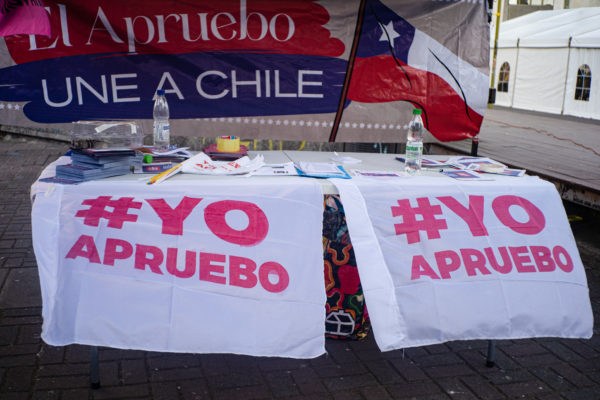Chile After the Plebiscite: Four Possible Scenarios

If what the citizens want is a new Constitution, the plebiscite may turn out to be a game of all or nothing.
By Rodrigo Espinoza (El Mostrador)
HAVANA TIMES – On September 4, we Chileans will face one of the most important milestones in our history: we’ll be deciding whether to approve or reject our first democratically drafted Constitution. The final public opinion surveys, published just before the deadline expired, indicate that the Reject option is leading. Still, the last word hasn’t yet been spoken, and the uncertainty hasn’t disappeared.
Beyond the projections of electoral participation and of possible results and reasons, one important aspect that needs analysis is what the country’s political destiny will look like on the day after – that is, on Monday, September 5. This column aims to offer four possible scenarios, depending on the results and the margins of victory, which could range from broad (a difference equal to or greater than 5%) or narrow (a difference of under 5%).
Scenario #1:
Should the Approve option win by a large margin, the current government would be strengthened, along with the coalition that promoted the Approve vote. A broad triumph would lend force to the beginning of a program for Constitutional reforms, which would be fairly restrictive and not necessarily open to the terms imposed by an enormously weakened right, although their presence will be necessary in order to approve the future Constitutional reforms and laws to accompany the new Magna Carta.
Scenario #2:
The second scenario would be a narrow win for the Approve option. This scenario would transform the new Constitution into a set of polarizing regulations. On the one hand, it’s fairly probable that we’d find ourselves combatting denunciations of electoral fraud from the Reject camp. In addition, there’d be difficulties achieving the minimum consensus needed to support the program of reforms. With a thin margin of difference, there could be substantive changes in the text, especially because the process would take place under conditions established by the right. Discussions would continue until some version of the new Constitution was derived that satisfied at least one part of that sector.

Scenarios #3 and #4:
The third and fourth possible scenarios involve a win for the Reject option. If that were to take place with a wide margin of victory, we’d probably see some attempts to weaken the government, via actions like constitutional accusations against the cabinet or the president himself for electoral intervention. The greater part of the opposition’s time and efforts would be devoted to demanding the president’s head, or that of part of his cabinet. Such a scenario would definitively increase uncertainty about the constitutional process, as debate about it could then be delayed for years, although the most probable result would be a package of reforms to the 1980 Constitution.
If the Refuse option wins a narrow victory, there will be a high degree of polarization and uncertainty, especially because the discussion and the agreements already reached regarding the constitutional process could also absorb months or even years. Nonetheless, the expected result in this context would be a new constitutional process, but one with less intensity. That is, it would take place without guarantees of the type of body charged with drafting it, or guarantees in subjects such as gender parity, representation of the original peoples, and, probably, without independent participants.
Regardless which of the options triumphs, a narrow margin will feed an increasingly polarized political climate. A win for the Reject option will doubtless increase the political and institutional uncertainty, since the discussion of the destiny of the constitutional process could take years, and then conclude with a package of reforms to the current Constitution. Up until now, the Reject camp hasn’t committed itself to concrete proposals, nor to a date for beginning a new constitutional process if their view is ratified on September 4.
That’s how things stand. If what the citizens want is a new Constitution, the plebiscite may turn out to be a game of all or nothing, no minor consideration for the 78% who voted for the drafting of a new Constitution in the original plebiscite (October 29, 2020).





